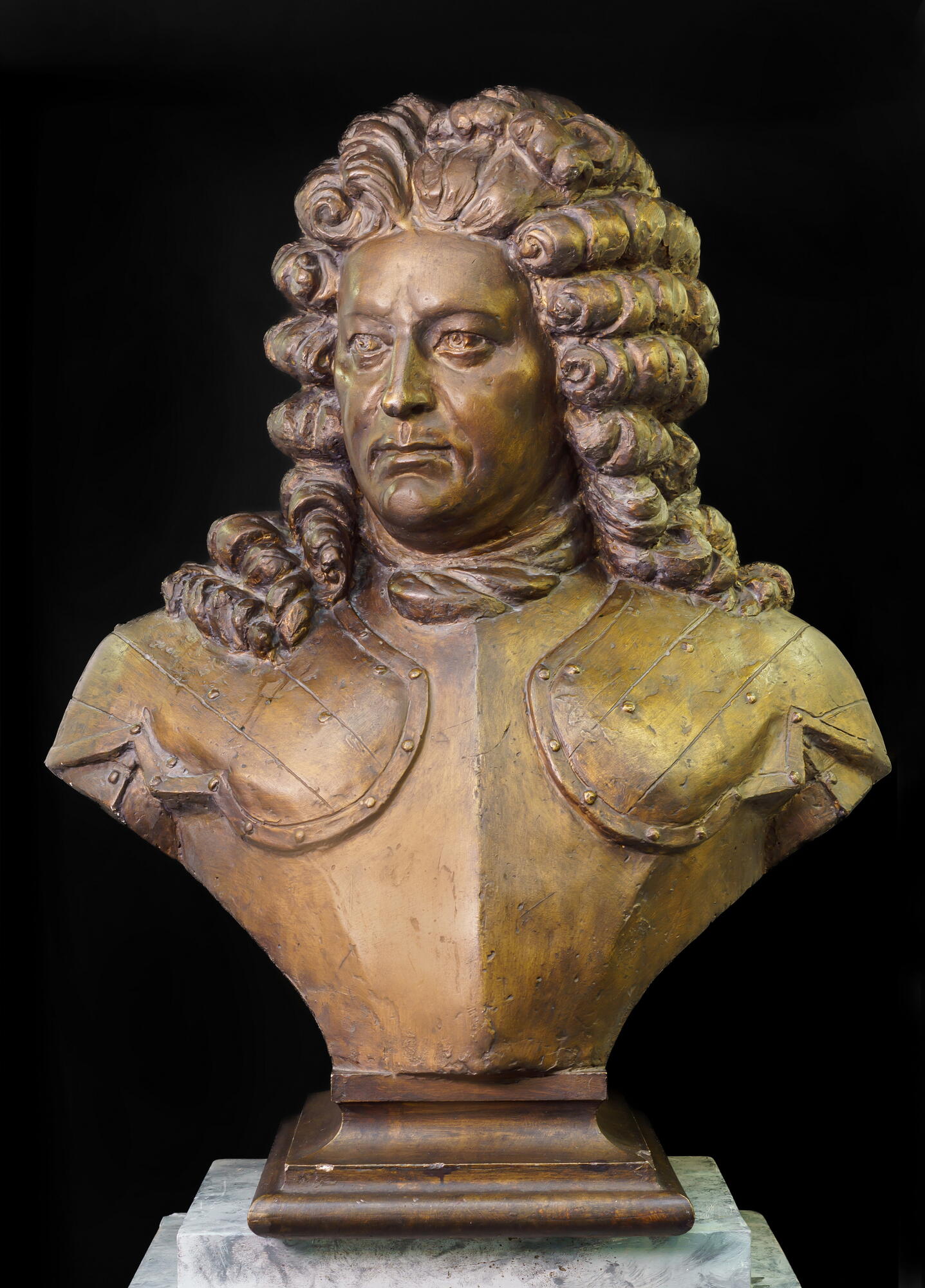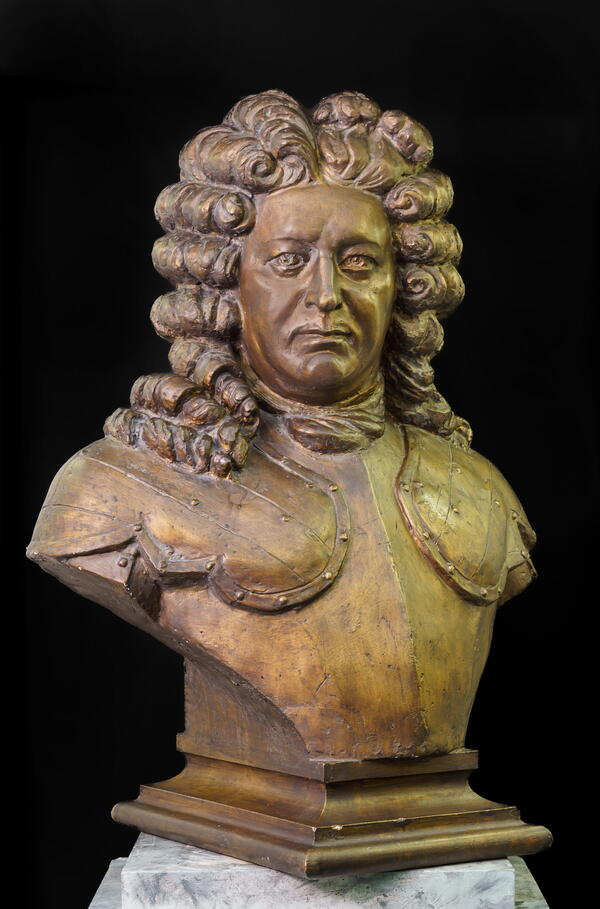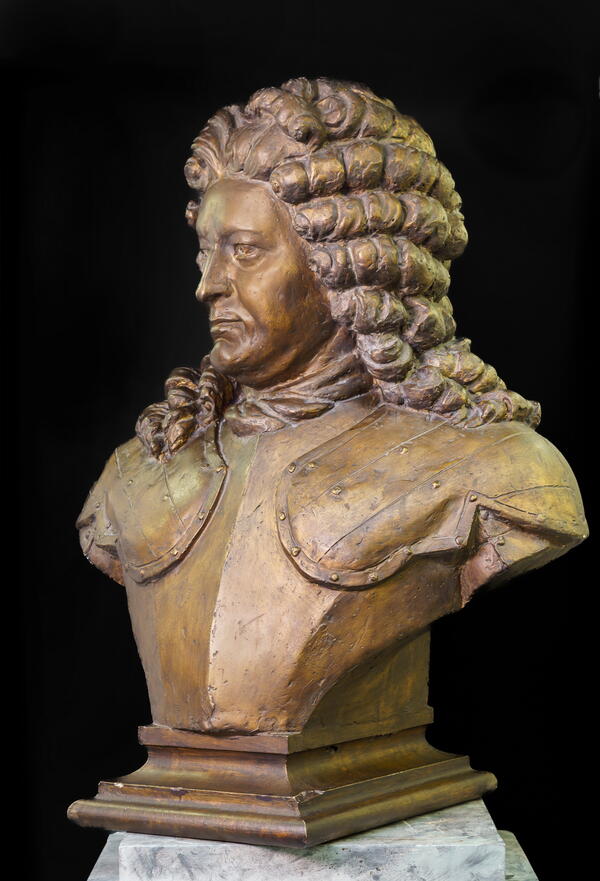Cornelius Cruys, the first admiral of the Russian Navy, was born on June 14, 1655 in Stavanger, Norway. At the age of 14, he left home and took a job as a sailor on a Dutch ship, and at 26, he became captain of a merchantman. His life changed after he met Peter the Great who visited the Dutch Republic disguised as a Russian volunteer Peter Mikhailov and asked Cruys to join the Russian Navy. Cruys set to work at once and became one of the key figures in the newly established Russian Navy.
Based on the Dutch and Danish regulations, Cornelius Cruys wrote the instructions titled “Main Rules of Naval Service”. He built shipyards in Voronezh and a squadron on the White Sea, fortified harbor installations in Arkhangelsk, Saint Petersburg, and Kronstadt, and supervised the training of craftsmen and officers for the Russian Navy in the Dutch Republic. In the rank of vice-admiral, Cruys commanded the Baltic Fleet, fought off the attack of the Swedish fleet during the defense of the Kotlin Island, laid down the “Poltava” — the first 54-gun ship of the Saint Petersburg Admiralty — together with Peter the Great, participated in the naval attack on the Vyborg, and stopped the Turkish offensive on Azov and Taganrog.
In 1712, because of Cruys’ miscalculations, Russian ships were not able to stop the landing of Swedish troops. The next year, the “Riga” flagship commanded by vice-admiral Cruys ran aground during a clash with Swedish ships, while another ship called “Vyborg” hit rocks and started to sink. In the conditions of the Great Northern War, a loss of a new ship without battle infuriated Peter the Great, and Cornelius Cruys was sentenced to death. Eventually, however, the emperor replaced the death sentence by reducing Cruys in rank and sending him to exile. A year later, Cruys was asked to return to Saint Petersburg, and although he was not made a fleet commander, Peter the Great assigned him with establishing the Board of Admiralties. After the Treaty of Nystad was concluded in 1721, Peter the Great promoted Cruys to the rank of admiral.
By the mid-1720s, the admiral’s health started to deteriorate. After the emperor’s death in 1725, Cornelius Cruys asked Catherine I to accept his resignation, but she refused. In March 1727, the Board of Admiralties reported that Cruys was no longer able to perform his service duties due to his age, but the empress dismissed the argument. On June 3, 1727, Cornelius Cruys died at the age of 70. He was buried in Holland according to his will.
Based on the Dutch and Danish regulations, Cornelius Cruys wrote the instructions titled “Main Rules of Naval Service”. He built shipyards in Voronezh and a squadron on the White Sea, fortified harbor installations in Arkhangelsk, Saint Petersburg, and Kronstadt, and supervised the training of craftsmen and officers for the Russian Navy in the Dutch Republic. In the rank of vice-admiral, Cruys commanded the Baltic Fleet, fought off the attack of the Swedish fleet during the defense of the Kotlin Island, laid down the “Poltava” — the first 54-gun ship of the Saint Petersburg Admiralty — together with Peter the Great, participated in the naval attack on the Vyborg, and stopped the Turkish offensive on Azov and Taganrog.
In 1712, because of Cruys’ miscalculations, Russian ships were not able to stop the landing of Swedish troops. The next year, the “Riga” flagship commanded by vice-admiral Cruys ran aground during a clash with Swedish ships, while another ship called “Vyborg” hit rocks and started to sink. In the conditions of the Great Northern War, a loss of a new ship without battle infuriated Peter the Great, and Cornelius Cruys was sentenced to death. Eventually, however, the emperor replaced the death sentence by reducing Cruys in rank and sending him to exile. A year later, Cruys was asked to return to Saint Petersburg, and although he was not made a fleet commander, Peter the Great assigned him with establishing the Board of Admiralties. After the Treaty of Nystad was concluded in 1721, Peter the Great promoted Cruys to the rank of admiral.
By the mid-1720s, the admiral’s health started to deteriorate. After the emperor’s death in 1725, Cornelius Cruys asked Catherine I to accept his resignation, but she refused. In March 1727, the Board of Admiralties reported that Cruys was no longer able to perform his service duties due to his age, but the empress dismissed the argument. On June 3, 1727, Cornelius Cruys died at the age of 70. He was buried in Holland according to his will.







